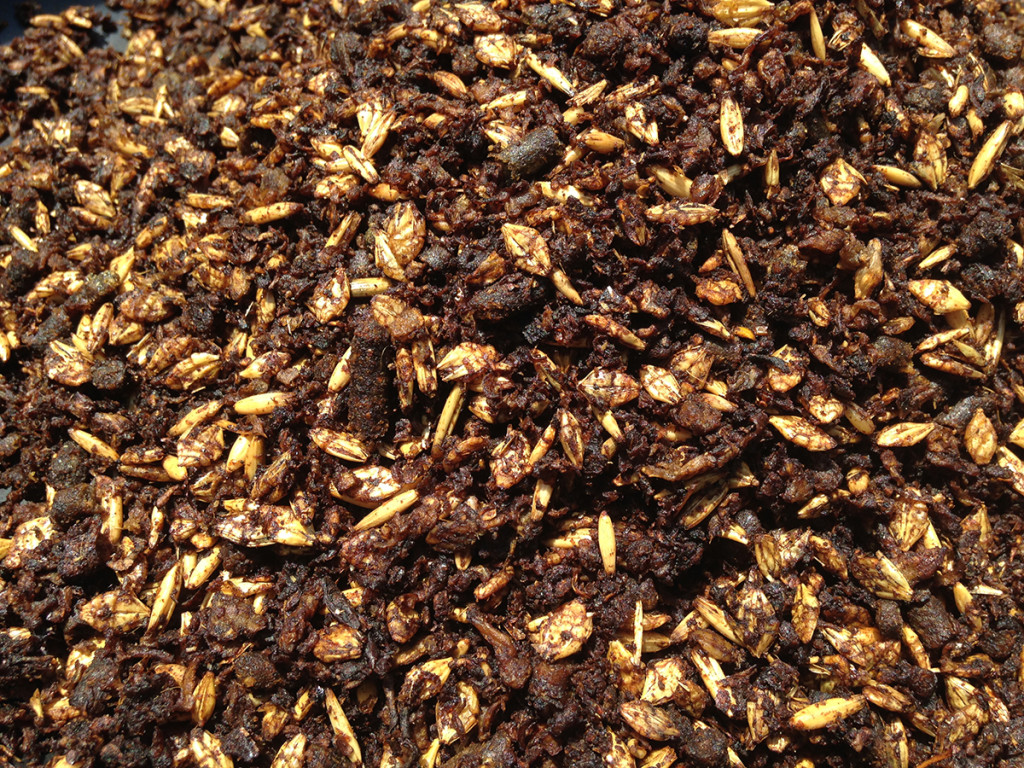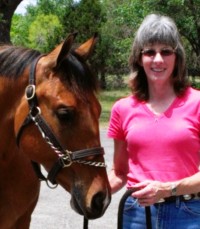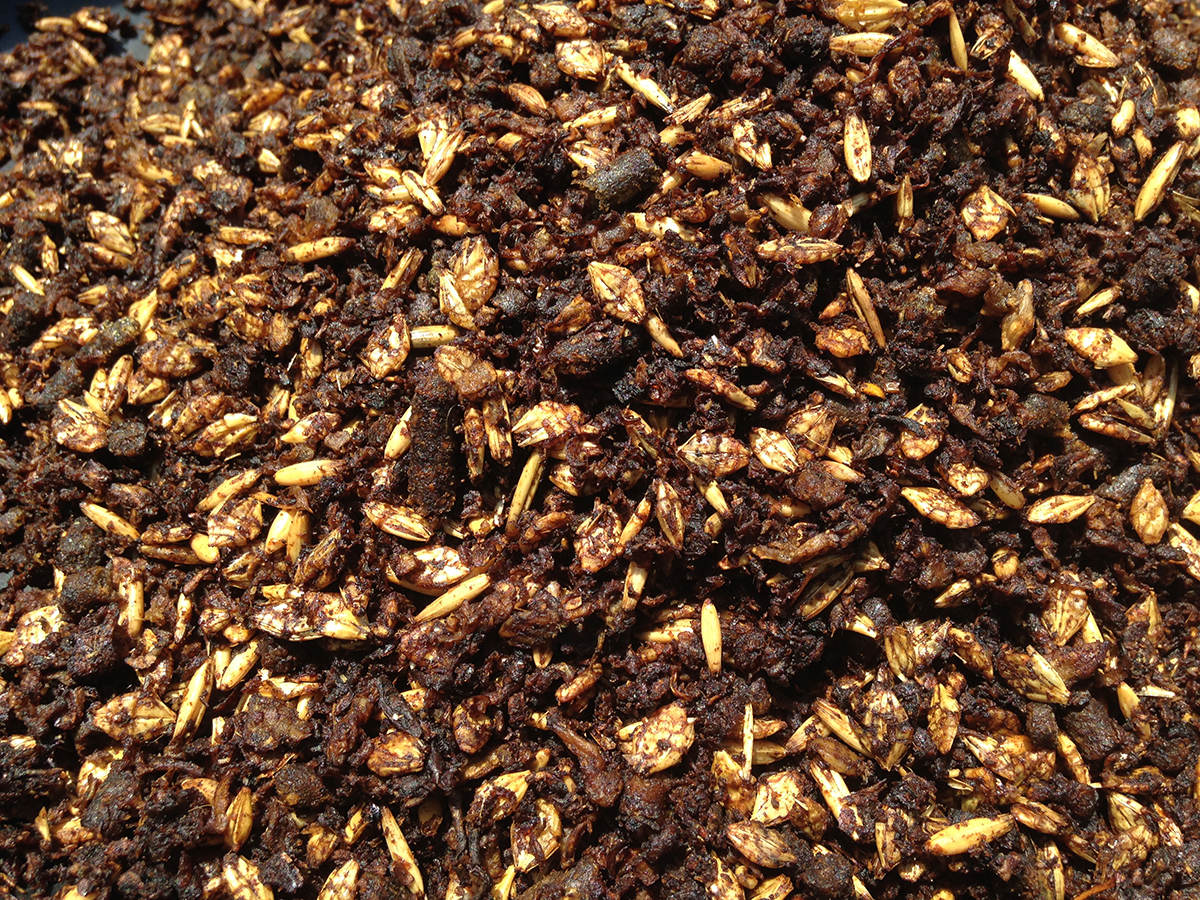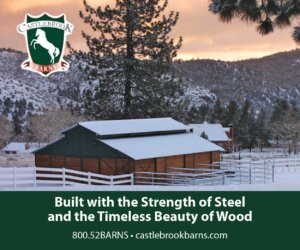All About Sweet Feeds
by Eleanor Blazer

Photo courtesy of Eleanor Blazer
Awww…the sweet, earthy smells of a horse barn: the horses, the hay, the manure, the feed! For a horse person, there is nothing like it. Even opening a bag of fresh horse feed and enjoying the aroma is a simple pleasure. Ever wondered about the source of that enticing smell? Many think it comes from molasses and that would be true, but it might surprise you to learn that molasses isn’t the only additive used to improve the taste (and smell) of modern horse feeds. Most feed companies use a blend of molasses and oil.
Molasses has been used for centuries in animal feed. It increases palatability (makes it taste good), helps control dust, prevents separation of the ingredients and adds some nutrients to the diet. There are a few challenges to molasses, however. First, it freezes. When the temperature dips below freezing a familiar sound in the feed room is the chipping away at the big block of frozen sweet feed. The addition of oil to the mix helps keep the feed from freezing into a solid mass.
Besides freezing, molasses also dries out in low humidity. Again, the addition of oil will help keep the texture of the feed moist and pleasing to the horse. Oil serves a third purpose as during manufacture molasses easily builds up on the equipment. Feed mills add oil to keep the molasses from adhering to the mixer and augers.
One of the myths about giving your horse sweet feed is that the molasses will increase starch and sugar levels (non-structural carbohydrates – NSC’s). Horse owners feel the molasses will make their horse have more energy, be harder to handle and prone to metabolic disorders such as equine polysaccharide storage myopathy and pituitary pars intermedia dysfunction (Cushings disease). The truth is, the amount of molasses in feed formulas is less than 10% and the average is approximately 5%. NSC levels available through other ingredients such as oats, corn and barley is of more concern. Eric Haydt, RAS, Senior Vice President of Triple Crown Feed offers an example of this.
“A pelleted feed that has no molasses, but contains corn, oats or barley could easily have an NSC value of 40% to 50%. A textured feed like Triple Crown Senior contains molasses, yet the balance of the ingredients are very low in starch and sugar content, so the average NSC value is 12%.”
One concern for owners of a horse with hyperkalemic periodic paralysis (HYPP) is the potassium level of feed, and molasses is a great source of potassium. Horses with HYPP cannot tolerate high levels of potassium – it will trigger an attack of muscle tremors or “tying-up.” Owners of positive HYPP horses must keep the overall potassium level in the diet below 1%; this includes forage, supplements and grain. Avoiding feeds with molasses can help keep that percentage low. Consult your veterinarian, equine nutrition consultant or feed specialist for assistance. Haydt also offers insight into the shelf life of horse feeds which varies according to temperature and storage.
“We would like to see textured feeds used within 60 days in the summer and within 90 days in the winter. So much depends on storage conditions, temperature and humidity.”
It’s been said that feeding horses is both a science and an art. It continually evolves based on availability of quality forage and your horse’s age, health and activity level. Additionally, it’s important to provide your horse with a feed that he likes and a little molasses can go a long way.
* Earn a Bachelor of Science Degree in Equine Studies, an Associate of Arts Degree in Equine Business Management, or certification as a professional horse trainer, riding instructor or stable manager. Go to www.horsecoursesonline.com and get started today!
Published in October 2015 Issue

Eleanor Blazer was raised training and caring for horses. She learned to ride and care for the horses her family bought and sold. Many of these horses required improved nutrition when they arrived for training. Eleanor’s experience and research has benefited both horses and horse lovers in the field of equine nutrition. An equine nutrition consultant, based in Bulverde, Texas, she keeps busy doing equine nutrition consultations, conducting seminars, and speaking to youth groups about horse care and nutrition. Eleanor is the author of the syndicated column The Way of Horses. She has more than 20 years experience helping and being a mentor to those wanting to know how to provide the very best care and nutrition for our special friend – the horse.





